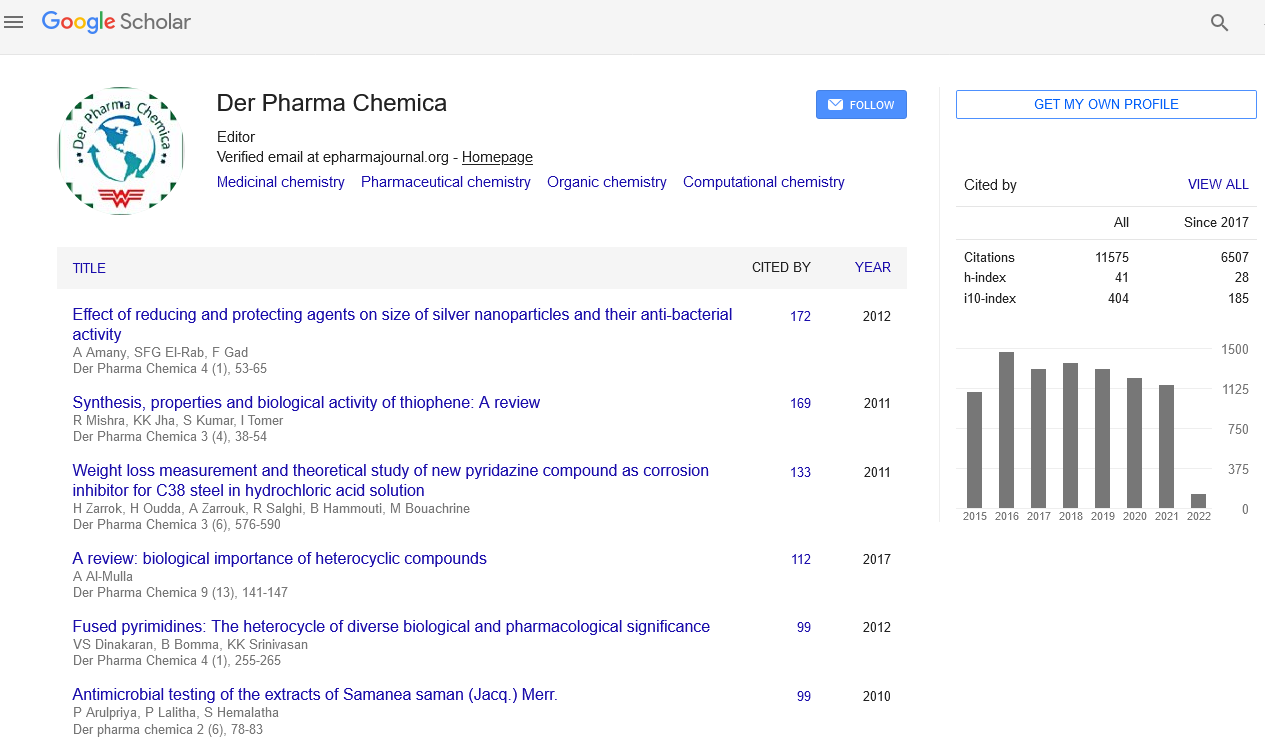Abstract
Antibacterial Activity of Aqueous and Methanolic Extracts of Olive (Olea europaea L.) Leaves Collected from Different Regions in Morocco
Author(s): Lahdibi Sahraoui H, El Berny H, El Karkour M, Quasmaoui H, Charof R, Mennane ZThe aim of this work was to investigate the antibacterial activity of Aqueous and Methanolic Extracts of Olive (Olea europaea L.) Leaves Collected from Different Regions in Morocco against 31 bacteria strains: five represent ATCC strains and 26 strains are from nosocomial infections (Escherichia coli, Klebsiella pneumonia, Enterobacter cloacae, Proteus mirabilis, Morganella morganii, Pseudomonas aeruginosa, Acinetobacter baumanii and Staphylococcus aureus from different origins and phenotypes. These strains were collected from the National Institute of Hygiene (NIH) Rabat-Morocco). The Powder of leaves O. europaea L., was extracted by Soxhlet extraction. The antibacterial activity was determined by agar diffusion method. The Minimum Inhibitory Concentration (MIC) and Minimum Bactericidal Concentration (MBC) have been determined. The extracts were found to be effective against all the bacterial strains, but they were effective against Gram-positive more than Gram-negative bacteria. The maximum inhibitory zone was noted against multiresistant Staphylococcus aureus (20 mm), imipenem resistant A. baumanii (18 mm), they were also active against Extended-Spectrum Beta-Lactamase-(ESBL): E. coli (1 and 3) and Pseudomonas aeruginosa (1) (16 mm and 14 mm respectively). The MIC observed from the aqueous and methanolic leaf extract is 12.5-50 μg/ml and 1.56-12.5 μg/ml respectively. For All the tested strains, bactericidal activity was observed neither for the aqueous extract nor for the methanolic extract. The results indicate that olive can be used for the treatment of various infections and for the development of new antibacterial agents.
Select your language of interest to view the total content in your interested language
Google Scholar citation report
Citations : 25868
Der Pharma Chemica received 25868 citations as per Google Scholar report
Der Pharma Chemica peer review process verified at publons
DOWNLOADS




